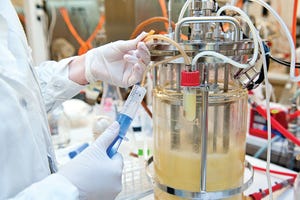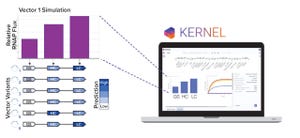April 2023 Featured Report
HTTPS://STOCK.ADOBE.COM
The genetic sequence of the Chinese hamster ovary (CHO) cell line first was published just over a decade ago (
1, 2
). As with the Human Genome Project, genomic knowledge of that and other biopharmaceutical production cell lines — both animal and microbial — has expanded greatly alongside dramatic increases in computing power (
3–5
). Meanwhile new and improved genetic engineering techniques have offered the potential for targeted rather than random integration of transgenes into production cells. And regulators began to emphasize monoclonality more, demanding evidence that cell banks are derived from single engineered cells. All the while, cell-line development (CLD) groups faced increasing pressure to shorten timelines associated with their workflows.
As presentations at recent BPI conferences have revealed, “big data,” next-generation sequencing (NGS), automation, and powerful analytical technologies are helping biopharmaceutical companies achieve all those goals in parallel. An...
HTTPS://STOCK.ADOBE.COM
The most important choice for bringing a novel biologic into clinical development could be the cell line for expressing it. Somewhat determined by that, development of the initial manufacturing process comes in a close second. After an investigational new drug (IND) application, early clinical studies use materials made from the cell line and manufacturing process that were selected at the start of a clinical candidate’s life cycle. The objective for most sponsor companies is to get IND-enabling material produced in the shortest timeline so that clinical trials can begin as soon as possible. Although future process development and optimization can alleviate early concerns related to low-producing clones or low-yield downstream processes, making changes can pose significant risk as a clinical program matures. Risks associated with product comparability (or lack thereof) increase as a biologic moves through the phases of clinical development toward commercialization.
Chemistry, manuf...
HTTPS://STOCK.ADOBE.COM
Cell-line development traditionally has focused on genetic engineering of chromosomal DNA in cellular nuclei. Combining technological advances such as zinc-finger nucleases (ZFNs) and transcription activator-like effector nucleases (TALENs) with ever-increasing genomic knowledge has enabled scientists to get impressive performance from microbial, plant, and animal cells. But few researchers have considered the potential for manipulating how genes are transcribed as an avenue for increasing productivity — until recently, that is.
Niall Barron is a professor of biochemical engineering at Ireland’s National Institute for Bioprocessing Research and Training (NIBRT) and at University College Dublin. He earned his PhD in microbial science from Ulster University and his bachelor of science in microbiology from Trinity College Dublin. And he has been a member of the European Society for Animal Cell Technology’s (ESACT’s) executive committee since 2014. Barron presented at two BPI conferenc...
Biologics accounted for more new drug approvals than did small molecules for the first time in 2022, marking a significant shift in the pharmaceutical industry (
1
). Large-molecule pipelines are also moving from standard monoclonal antibodies (MAbs) to more complex and difficult-to-express molecules, which intensifies pressure on the industry to meet biomanufacturing demands. There is a pressing need for innovative Chinese hamster ovary (CHO)–based bioproduction systems to keep pace with this evolving landscape.
While multiple areas of cell-line development (CLD) have improved over the years, advances in expression vector design have lagged behind other technologies. Most expression vectors still rely on a “one-size-fits-all” approach across molecules in which the coding sequences (CDSs) of different therapeutic proteins are inserted into fixed plasmids made up of legacy genetic parts. That method often results in suboptimal expression, increased manufacturing costs, and delays in clinical development fo...
Subscribe to receive our monthly print or digital publication
Join our 70,000+ readers. And yes, it's completely free.









